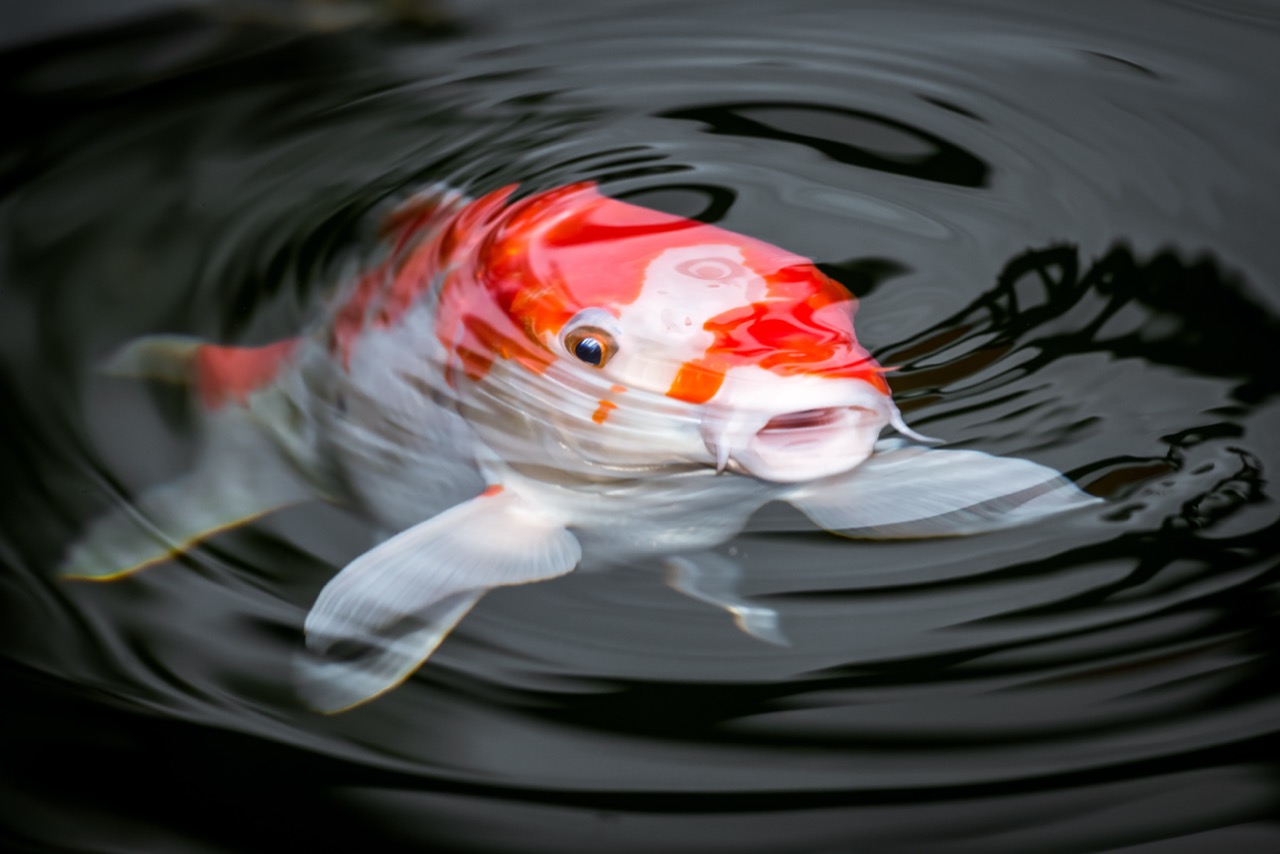Koi fish, with their vibrant colors and graceful movements, are often seen as living jewels in the waters of decorative ponds and gardens worldwide. Originating from the common carp, these fish have been selectively bred for centuries to achieve their spectacular appearance. The cultural significance of koi extends beyond aesthetics, symbolizing love, friendship, and perseverance in Japanese culture. This article delves into the fascinating world of koi, exploring their biology, behavior, and the profound relationship they share with humans.
Characteristics / Physical Description
Koi fish are renowned for their striking colors and patterns, which include shades of white, black, red, orange, yellow, blue, and cream. Their bodies are elongated and robust with flowing fins that enhance their swimming elegance. Adult koi typically range from 60 to 90 centimeters in length, although some can grow much larger under optimal conditions. The coloration and patterning of koi are the result of meticulous selective breeding, and these traits are highly prized by enthusiasts.
Taxonomy and Classification
Koi are domesticated varieties of the common carp, Cyprinus carpio, which belongs to the family Cyprinidae. Initially found in Central Europe and Asia, common carp have been bred into numerous varieties of koi, each with unique color patterns and scales. These varieties include the Gosanke, which encompasses the Kohaku, Sanke, and Showa, among the most popular and appreciated types in koi shows and collections.
Behavior and Social Structure
Koi are social fish that thrive in groups and can often be seen swimming in synchronized patterns. They are known for their docile and friendly nature, frequently interacting with humans, especially during feeding times. Koi are diurnal, active mainly during the day, and have a hierarchical social structure that is observed during feeding and mating behaviors.
Habitat and Distribution
Originally, koi were common in rice paddy fields in Asia, where they were kept for their utilitarian purpose of keeping the water bodies free from insects and algae. Today, they are predominantly found in ornamental ponds and water gardens worldwide. The adaptability of koi to various climatic conditions has allowed them to thrive in many environments outside their native range.
Diet and Feeding Habits
Koi are omnivorous, feeding on a mix of algae, plants, insects, and specialized koi food, which includes pellets rich in vitamins and minerals to enhance their color and vitality. In garden ponds, koi are often hand-fed, which has led to them being remarkably tame, enabling close human interaction.
Breeding and Reproduction
Breeding koi is an art form, requiring precise selection of parent fish to produce desirable offspring. Spawning typically occurs in the spring when water temperatures rise. Females lay thousands of eggs that are fertilized by male koi. The eggs hatch in about four to seven days, depending on water temperature. Selective breeding practices are critical for maintaining and enhancing desired traits in the offspring.
Relationship with Humans
Koi have a significant cultural impact, particularly in Japan, where they are a symbol of love and perseverance. They are also popular in the aquaculture and ornamental fish industry for their beauty and the serene ambiance they bring to garden ponds. Koi keeping has evolved into a therapeutic hobby, believed to reduce stress and increase enjoyment in outdoor spaces.
Evolutionary History
The domestication of koi began over a thousand years ago in China and Japan, where natural color mutations of common carp were selectively bred to enhance their aesthetic appeal. Over centuries, this selective breeding has led to the diverse array of colors and patterns seen in modern koi.
Use as Research Animals
While primarily kept for ornamental purposes, koi have also been used in environmental studies to assess water quality and ecosystem health because of their sensitivity to changes in their aquatic environment.

